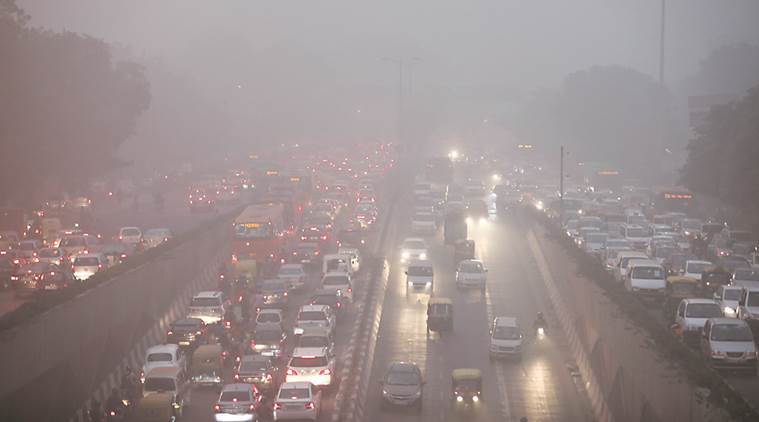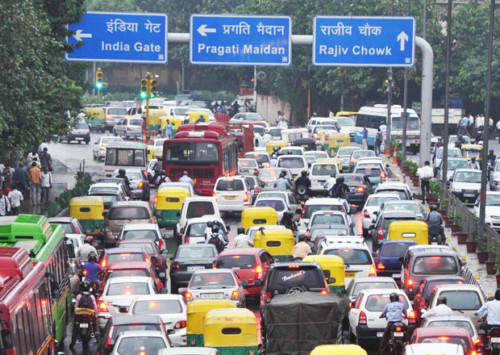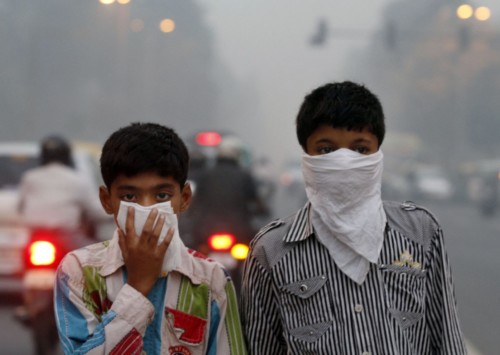India struggles with air pollution

India has 14 of the 15 cities in the world with the maximum air pollution in terms of PM 2.5 concentrations
India has long struggled to pull together the type of coordinated national approach that has helped countries like China reduce pollution. While the government of India is focused on the economic growth of the country, its people are dying breathing world’s worst toxic air.
As much as we love the idea of stargazing, it is becoming an impossibility in urban India. Even with India being one of the fastest growing economies in the world, the country is finding it hard to deal with the severe pollution problems. According to a latest report by World Health Organisation (WHO), India has 14 of the 15 cities in the world with the maximum air pollution in terms of PM 2.5 concentrations – the worst being Kanpur with a PM 2.5 concentration of 173 micrograms per cubic metre, followed by Faridabad, Varanasi and Gaya. Other Indian cities that registered very high levels of PM 2.5 pollutants are Delhi, Patna, Agra, Muzaffarpur, Srinagar, Gurgaon, Jaipur, Patiala and Jodhpur.
Air pollution is not only harming nature and wildlife, but also has an adverse effect among humans. As each day passes by, health issues like asthma and other respiratory issues, improper lung function, cancer, coughing, wheezing, damage to the immune system, endocrine and reproductive systems, heart problems etc. are worsening. WHO estimates that around seven million people die every year from exposure to fine particles in polluted air out of which 1.81 million people belong to India.
Dr Anutosh Singh of G.B. Pant hospital, says “The most common problem is related to respiration. But this time we are seeing a rather large number of cases of severe breathlessness, coughing and sneezing and bronchiolitis due to the smog. Also, we attribute air pollution as one of the major risk factors resulting in heart diseases in India. People with predisposed diseases are especially at a major risk, as the polluted air exacerbates the disease.”
Dealing with air pollution during Diwali
As the Indian festival of Diwali approaches, which features massive fireworks, pollution levels in New Delhi and its surrounding states will attain dangerous proportions. Stubble burning in neighbouring states of Punjab and Haryana add to Delhi’s worries. Every year during this season, farmers burn paddy stubbles to clear their fields for the winter crop. The carbon-laden smoke from the region enters Delhi with the wind. Owing to the high moisture and low temperature during November and December in Delhi, the pollutants remain suspended in air.
Taking cognisance of the hazardous nature of air pollution during winter, the Supreme Court on October 30 imposed time restrictions on burning of firecrackers on Diwali. The court said only ‘green crackers’ (which are within the permissible decibel and emission levels) will be allowed in the market. It also ordered that firecrackers could be burst between 8 pm and 10 pm on the festival night on November 7.
However, a similar temporary ban was imposed last year also ahead of Diwali but there were reports of it being flouted at many places. Even the farmers have been ignoring the government’s warning of a penalty due to their lack of affordability to buy harvesting machines that costs up to INR 50,000 (USD 675) a piece.
It is usually seen that countries which have successfully implemented policies to battle pollution are comparatively richer to the rest of the world. According to the World Bank’s calculations, health-care fees and productivity losses from pollution cost India as much as 8.5 pc of its GDP. At its current size of USD 2.6 trillion that works out to about USD 221 billion every year.













